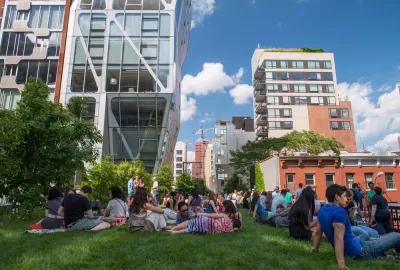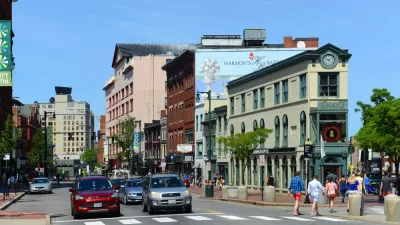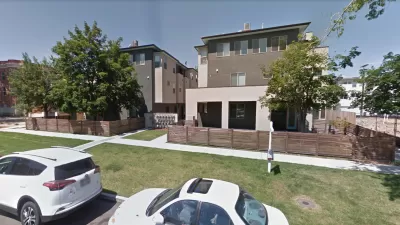While urbanists target zoning reform to help build more housing in desirable neighborhoods, other neighborhoods around cities are being left behind to languish, according to this opinion piece published by Forbes.

An op-ed by Pete Saunders critiques the effects of zoning reform that only seeks to build walkable urbanism in already desirable neighborhoods.
Writing for Forbes, Pete Saunders launches an investigation of the skyrocketing housing prices by identifying several root cases of the common problem around U.S. cities. According to Saunders changing metropolitan economies, geography and the nature of redevelopment versus greenfield development are all contributing to the trends in the housing market. "But perhaps the greatest factor driving prices upward in cities is the growing preference for walkable urbanism (WU)," adds Saunders.
And therein the problem lies, according to Saunders's argument. Given that walkable urbanism is in finite supply, it's troubling that urbanists tend toward tunnel vision, or "a laser focus on a select group of neighborhoods in a given city that boosts prices in the most desirable areas, and correspondingly drops them in similarly constructed but less desirable neighborhoods."
Saunders calls on a housing price analysis and data visualization of New York City completed by Constantine Valhouli. Saunders uses that evidence to reach the conclusion that while zoning reform pursued by urbanists to help build new walkable urbanism might achieve those ends in certain desirable neighborhoods, it might also lead to negative, unintended consequences in many other parts of cities.
FULL STORY: Zoning Reform: Not (Entirely) The Answer

Study: Maui’s Plan to Convert Vacation Rentals to Long-Term Housing Could Cause Nearly $1 Billion Economic Loss
The plan would reduce visitor accommodation by 25,% resulting in 1,900 jobs lost.

Alabama: Trump Terminates Settlements for Black Communities Harmed By Raw Sewage
Trump deemed the landmark civil rights agreement “illegal DEI and environmental justice policy.”

Why Should We Subsidize Public Transportation?
Many public transit agencies face financial stress due to rising costs, declining fare revenue, and declining subsidies. Transit advocates must provide a strong business case for increasing public transit funding.

Paris Bike Boom Leads to Steep Drop in Air Pollution
The French city’s air quality has improved dramatically in the past 20 years, coinciding with a growth in cycling.

Why Housing Costs More to Build in California Than in Texas
Hard costs like labor and materials combined with ‘soft’ costs such as permitting make building in the San Francisco Bay Area almost three times as costly as in Texas cities.

San Diego County Sees a Rise in Urban Coyotes
San Diego County experiences a rise in urban coyotes, as sightings become prevalent throughout its urban neighbourhoods and surrounding areas.
Urban Design for Planners 1: Software Tools
This six-course series explores essential urban design concepts using open source software and equips planners with the tools they need to participate fully in the urban design process.
Planning for Universal Design
Learn the tools for implementing Universal Design in planning regulations.
Smith Gee Studio
Alamo Area Metropolitan Planning Organization
City of Santa Clarita
Institute for Housing and Urban Development Studies (IHS)
City of Grandview
Harvard GSD Executive Education
Toledo-Lucas County Plan Commissions
Salt Lake City
NYU Wagner Graduate School of Public Service




























